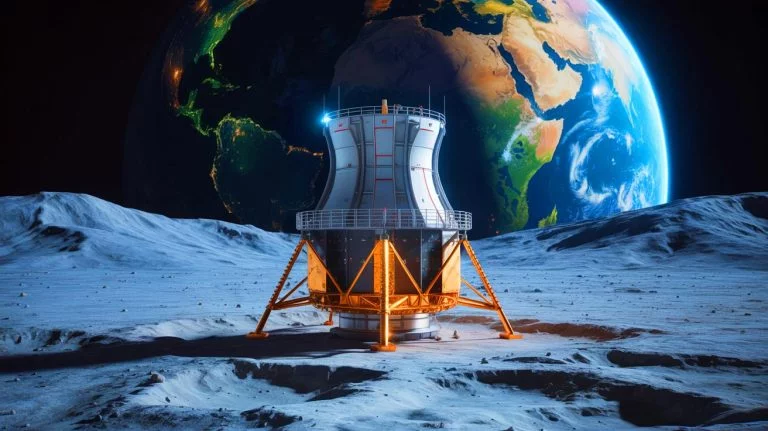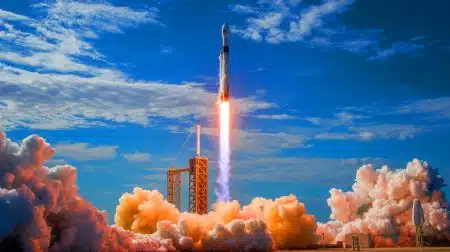| IN A NUTSHELL |
|
In a bold move to assert its dominance in space exploration, NASA has announced an ambitious plan to establish a 100-kilowatt nuclear reactor on the Moon by 2030. This strategic decision comes at a time when global interest in lunar colonization is intensifying, particularly with China and Russia also vying for lunar supremacy. The initiative, spearheaded by interim NASA chief Sean Duffy, marks a significant shift in the agency’s approach to sustainable energy solutions on the lunar surface. The project is not just about energy; it’s a statement of geopolitical ambition and technological prowess.
The Shift to a 100-Kilowatt Reactor
NASA’s strategy marks a significant departure from its previous plans under the “Fission Surface Power Project.” Initially, the agency aimed to deploy a 40-kilowatt reactor, which was projected to power approximately 33 households. However, the new directive calls for a more powerful 100-kilowatt reactor, with an accelerated timeline targeting a launch by 2030. This shift is driven by the necessity for a more reliable and robust energy source that can support sustained human presence on the Moon.
The lunar environment presents unique challenges that make nuclear power an attractive option. Solar panels, while effective on Earth, face significant limitations on the Moon due to its long day-night cycle and extreme temperature fluctuations. Each lunar day and night lasts about 14 Earth days, posing challenges for solar energy collection. A nuclear reactor offers a continuous power supply, crucial for life support, scientific experiments, and operational equipment.
Geopolitical Implications and the ‘Keep-Out Zone’
The decision to fast-track the nuclear reactor also has significant geopolitical implications. NASA’s plan is partly a response to the growing space ambitions of China and Russia, who have announced their own plans for a lunar nuclear power plant by 2036. There is concern that the first nation to establish a reactor could create a “keep-out zone,” limiting access to key lunar resources.
The joint China-Russia International Lunar Research Station (ILRS) project is a direct competitor to NASA’s lunar objectives. Establishing a permanent power source at a strategic lunar location, such as a pole, could give them control over vital resources and restrict other nations’ advancements. The Trump administration’s proposed budget for 2026 aligns with this competitive stance, emphasizing human spaceflight and reallocating funds from other science missions to prioritize lunar and Mars exploration.
Accelerating Commercial Space Ventures
In addition to the lunar reactor project, interim NASA chief Sean Duffy is pushing for the rapid development of commercially operated space stations. With the International Space Station nearing the end of its operational life, there is a pressing need to establish new orbital platforms. Companies like Axiom Space, Vast, and Blue Origin have already expressed interest in creating commercial alternatives.
Nasa aims to award at least two contracts within six months of the request for proposals. This aggressive timeline underscores the urgency of maintaining a U.S. presence in orbit. However, there are concerns that insufficient funding could jeopardize these commercial ventures. Lawmakers are urging NASA to allocate resources more effectively to ensure the success of these initiatives.
Leadership and Industry Collaboration
The directive to fast-track the lunar reactor project includes a mandate for NASA to appoint a leader for the initiative and gather industry feedback within 60 days. This approach emphasizes collaboration with private industry to achieve the ambitious goals set forth by the agency. By leveraging the expertise and innovation of commercial partners, NASA hopes to overcome the technological and logistical challenges associated with lunar colonization.
This collaborative effort reflects a broader trend in space exploration, where partnerships between government agencies and private companies are becoming increasingly common. The success of this initiative could set a precedent for future projects, both on the Moon and beyond.
As NASA embarks on this ambitious endeavor, the world watches with anticipation. The outcome of this project could reshape the future of space exploration and redefine international relations in the cosmos. How will the advancements in lunar energy impact global dynamics in space exploration?
Did you like it? 4.5/5 (24)








Is it really necessary to spend $5 billion on a moon reactor? 🤔
Wow, a nuclear reactor on the Moon! That’s some serious sci-fi stuff! 🚀
I hope they consider the environmental impact of placing a reactor on the Moon.
Is it safe to have a nuclear reactor on the Moon? What if something goes wrong?
China and Russia are also racing to the Moon, it’s like the space race all over again!
Why not invest that money here on Earth instead? We have plenty of issues to solve.
100-kilowatt reactor sounds powerful! Curious how they plan to manage it remotely.